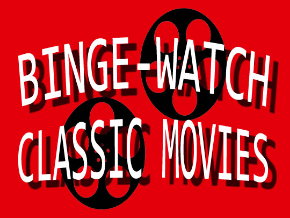
Choose the best Options in Asian Films
They range from historical dramas (such as the film Changkhwan by Korean director Kvoi Taeka) to the Hong Kong police thriller Jackie Chan. From ancient legends, such as “The Crouching Tiger, the Invisible Dragon”, to the innermost chronicle of quite modern love relationships (as in the film “Love languor” by Wong Kar-Wei or “The aroma of green papaya”). Make a visit to https://new-gomovies.online/ and get the best of Asian films there.

How to explain such a noticeable success of all these films with the American audience?
“Despite the diversity,” American film critic Dave Carr writes in the article “Asian Alternative”, “Asian films have one common property: they are fundamentally not similar to Hollywood ones. In the one-time-two family drama, Taiwanese director Edward Young takes a close look at the very fabric of everyday life in a Taipei family. Such a thing could not even have occurred to a Hollywood director. In the fairy tale “The Crouching Tiger” the supernatural is included in reality with such naturalness that Hollywood would never dare. ”
- Add to this the centuries-old pictorial culture. In the film “The Aroma of Green Papaya”, the rain falling in the courtyard is one of the most dramatic prices of the film, at least visually. And from the camera work in the film Chang Yimou “Raise the Red Lights” is breathtaking no less than from the works of famous Chinese artist Qi Bai Shi.
- Asian cinema offered the American audience, tired of Hollywood, more than new names and new styles – it showed that his primary source is life. And what is the primary source of most Hollywood films? Another Hollywood movie. Look at the latest production: “What does a woman want?” Or, say, “Vertical Limit”. The first is a conscious or subconscious imitation of paintings
Cramer with Katherine Hepburn and Spencer Tracy. The second is another option for operating climbing escapades.
In the Chinese drama, director Young (like many other Asian directors) leaves the viewer the freedom to choose his own point of view. The author is not included in the drama, he seems to look at it from afar, giving the viewer the opportunity to identify himself with any of the characters. Togo the same kind of difference is also characteristic of the visual range: American films are distinguished by a sharp change of plans from general to large, a sharp approach of the camera to a specific place, face. The subject. That is, the camera hints to the viewer what to pay attention to, what to expect, why to be afraid.
The Right Settings
The Asian cameraman style is much more respected by the viewer and his ability to see and understand. It symbolizes the victory of wholeness over fragmentation, grace overpowers restraint over fussiness ideas and feelings over action. Compared to Asian aesthetics sharp manipulations with the camera look like punches in the face.
The Far Eastern cinema, as well as all the art of this region in general, is based on the Chinese tradition, which served East Asia the same support that Hellas –
Europe. Therefore, in whatever country a particular film is shot, it bears the imprint of classical Chinese poetics. It is she, and not the features of the landscape or ethnographic features of everyday life that makes Asian cinema exotic. In order to catch the artistic specifics of this worldview, one must be aware of its spiritual origins.
Conclusion
For the first time, my old friend, the wonderful film director Boris Frumin, made me think about the connection between cinema and Chinese art. He once said that he undertakes to film any poem of classical China. This remark indicates a radical difference between Chinese aesthetics.
